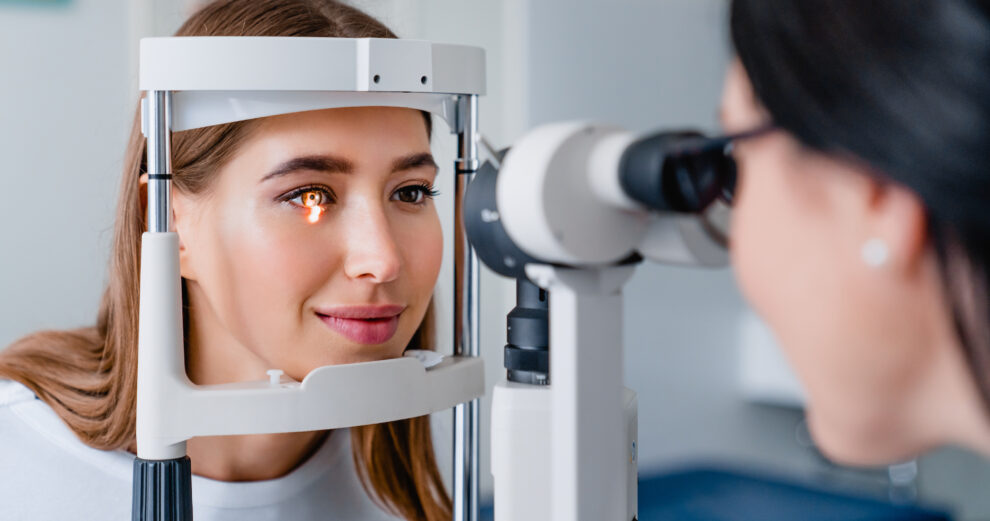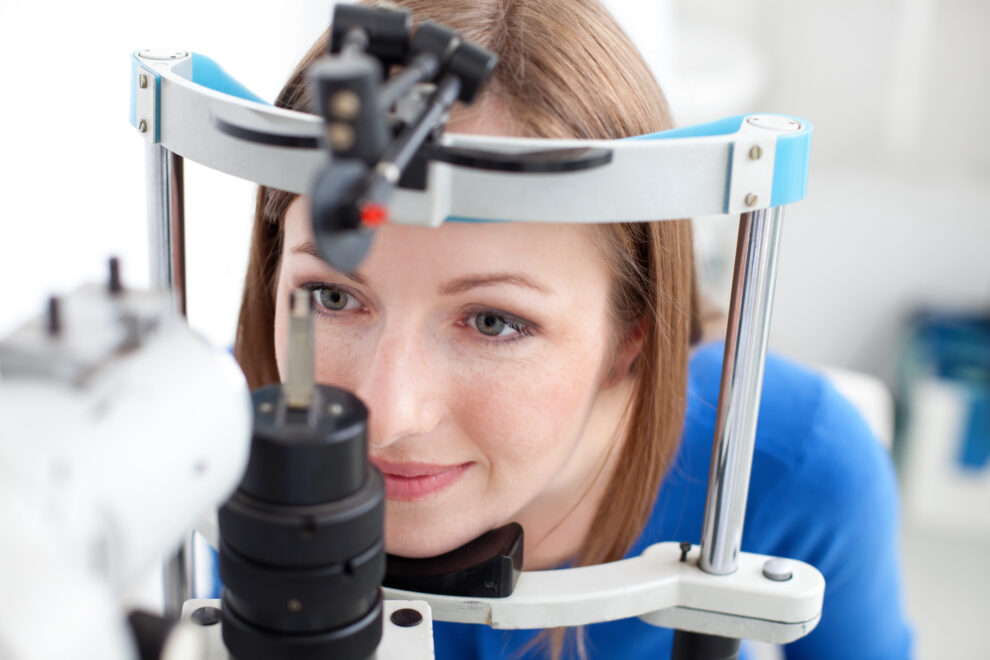Eye Exams

Eye Exams
Is your vision no longer as sharp as it once was, or are you curious about keeping your eyes healthy? You may benefit from an eye exam. An eye exam at Kitsap Eye Physicians allows your eye doctor to check how well you can see and for any problems that might affect your vision.
What is an Eye Exam?
An eye exam is a series of tests performed by an ophthalmologist or optometrist to assess the health of your eyes. Eye exams help ensure your eyes function properly and catch any potential problems early on.
Why are Eye Exams Necessary?
Many eye conditions can develop without any noticeable symptoms at first. Scheduling eye exams regularly is essential because they can detect these problems early when they’re often easier to treat. Here are some reasons why eye exams are necessary:
Early Detection of Eye Conditions
Eye conditions like glaucoma, macular degeneration, and diabetic retinopathy can worsen over time and lead to vision loss if left untreated. Early detection allows for prompt treatment and helps preserve your vision.
Monitoring Existing Eye Conditions
If you already have a refractive error, such as nearsightedness or farsightedness, your eye doctor at Kitsap Eye Physicians will need to monitor your vision and adjust your prescription if necessary.
Maintaining Overall Health
Some eye conditions can be linked to other health problems like diabetes or high blood pressure. Eye exams can sometimes provide clues about your overall health.
What to Expect at an Eye Exam
An eye exam typically takes 30 to 45 minutes and involves a series of tests and measurements, including:
Discussing Your Medical History
Your eye doctor will ask you questions about your overall health, any eye problems you’ve experienced, and your family history of eye conditions. This information helps them understand your risk factors.
Visual Acuity
Testing your visual acuity involves your eye doctor asking you to read letters from a chart hung on the wall or displayed on a machine. This test measures how well you see at different distances, both near and far.
Checking Prescription
If you wear glasses or contacts, your eye doctor will check your current prescription to see if it still provides the best possible vision correction. They will also check your prescription to determine if you need corrective aids, even if you don’t wear them, to ensure you can see clearly.
Pupil Response
Your eye doctor will shine a light into your eyes and observe how your pupils react. This test helps assess nerve function and how well your eyes adjust to light changes.
Testing Peripheral Vision
Testing your peripheral vision may involve looking straight ahead while your eye doctor moves a small object or light in your peripheral (side) vision to see how well you can detect it.
Evaluation of Ocular Motility
To evaluate your ocular motility, your eye doctor will ask you to follow their finger or a light with your eyes in different directions. This test checks how well your eye muscles work together to coordinate your eye movements.
Tonometry

Tonometry is a test that measures the pressure inside your eye (intraocular pressure). High pressure can be a sign of glaucoma, a leading cause of vision loss.
Tonometry is usually painless and involves gently puffing air into your eye or using a gentle puff of air or a small probe to measure the pressure.
Slit-Lamp Microscope Examination
During a slit-lamp examination, your eye doctor will use a special microscope with a bright light to examine the front part of your eye in detail. This allows them to see the cornea, iris, lens, and other structures for signs of abnormalities.
Using Dilating Eye Drops
Sometimes, your eye doctor may put drops in your eyes that dilate your pupils. Dilating your pupils allows them to see the back of your eye, including the retina and optic nerve, in more detail.
However, dilating your pupils does cause blurry vision for a few hours after your eye exam, so you may need someone to drive you home.
Additional Tests
In some cases, depending on your needs, your eye doctor might perform additional tests such as:
Optical Coherence Tomography (OCT)
Optical coherence tomography (OCT) is painless imaging that uses light waves to create a detailed cross-sectional image of your retina.
Fundus Photos
Fundus photos are images taken of the back of your eye.
Fluorescein Angiography (FA)
Fluorescein angiography is a test that involves injecting a special dye into your bloodstream and then taking pictures of your eye to see how blood flows through the retina and other structures.
Topography
Topography is a test that scans the cornea’s surface, the clear dome-shaped front part of the eye, to measure its shape. This test can help diagnose conditions like astigmatism that occur due to a misshapen cornea.
Automated Visual Field
An automated visual field test measures peripheral vision by having you stare at a central point while lights flash in different areas of your vision. You need to press a button whenever you see a light.
This helps detect blind spots or areas of vision loss.
How Often Should I Schedule Eye Exams?
The frequency of your eye exams will depend on several factors, including:
Your Age
Children typically need eye exams more often than adults. Pediatricians should check the eyes of infants and toddlers during well-child visits.
School-aged children should have a comprehensive eye exam before entering first grade and then every one to two years after that. Adults with no risk factors for eye conditions generally need eye exams every two to four years, as recommended by the AAO.
Adults over 65 should have eye exams annually as their risk of developing eye conditions like glaucoma and cataracts increases with age.
Your Medical History
People with certain medical conditions, such as diabetes or a family history of eye conditions, may need more frequent eye exams.
Your Current Prescription
If you wear glasses or contacts and your prescription changes frequently, you’ll likely need more frequent eye exams to ensure your vision correction remains optimal. Wearing visual aids usually necessitates an annual eye exam to ensure your prescription stays current and you can see clearly.
Talk to Your Eye Doctor
The best way to determine how often you need eye exams is to talk to your ophthalmologist or optometrist. They will consider all the factors mentioned above and recommend an appropriate schedule for you.
Scheduling eye exams regularly is essential for maintaining good vision and overall health. By catching eye problems early, you can help preserve your sight and enjoy a lifetime of clear vision!
Can you no longer remember when your last eye exam was? Make your eyes a priority by scheduling your eye exam at Kitsap Eye Physicians in Port Orchard and Bremerton,WA, now!

